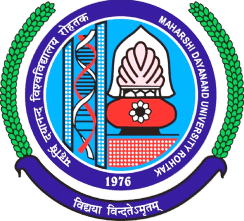
Ph.D in Art, Design and Media: Admission Process, Eligibility Criteria, Duration, Course fees, Highlights, Subjects, Syllabus, FAQ.
Ph.D in Art, Design and Media Overview:
- Interdisciplinary Approach: Programs often encourage interdisciplinary exploration, allowing students to blend various artistic mediums, design principles, and media technologies to create innovative works or scholarly research.
- Research Emphasis: The program heavily emphasizes research methodologies, enabling students to conduct in-depth investigations into various aspects of art, design, and media. This could involve historical studies, theoretical analysis, or practical applications.
- Creative Practice: Students might have the opportunity to engage in their artistic or design practice, creating original artworks, designs, or media projects that contribute to their research and academic discourse.
- Theoretical Studies: Courses often cover critical theory, aesthetics, cultural studies, media theory, and other relevant theoretical frameworks that help students contextualize their creative work within broader academic discourse.
- Independent Study and Dissertation: A significant portion of the program involves independent study and culminates in the completion of a dissertation or thesis. This scholarly work demonstrates a student’s original research, critical thinking, and contribution to the field.
- Collaboration and Networking: Depending on the program, students might collaborate with peers, professors, and professionals in the field, participating in conferences, exhibitions, or other academic and artistic events.
- Teaching Opportunities: Some programs offer teaching assistantships or opportunities to gain teaching experience, allowing students to share their knowledge and expertise with undergraduates or in workshops.
- Career Paths: Graduates of Ph.D. programs in Art, Design, and Media often pursue careers in academia as professors or researchers. They may also work in creative industries, museums, galleries, design firms, media companies, or as independent artists/designers.
Ph.D in Art, Design and Media Eligibility:
- Educational Background: Typically, applicants should hold a master’s degree in a relevant field such as Fine Arts, Design, Media Studies, Visual Arts, or a closely related discipline. Some programs might accept exceptional candidates with a strong bachelor’s degree directly into a Ph.D. program, bypassing the master’s degree requirement.
- Academic Excellence: A strong academic record is usually required, with most programs expecting a minimum GPA (grade point average) that meets their standards. This might vary among institutions.
- Research and Professional Experience: Demonstrated research experience, professional practice in art, design, or media, and a strong portfolio showcasing creative work or scholarly achievements can significantly strengthen an application.
- Letters of Recommendation: Applicants are typically required to submit letters of recommendation from academic or professional sources who can speak to the applicant’s capabilities and potential for success in a doctoral program.
- Statement of Purpose: A well-articulated statement of purpose outlining the applicant’s research interests, academic goals, and reasons for pursuing a Ph.D. in Art, Design, and Media is usually required.
- Standardized Tests: Some universities might require standardized test scores, such as the GRE (Graduate Record Examination) or specific subject tests. However, this requirement varies across institutions and programs.
- Language Proficiency: For international applicants whose native language is not the language of instruction, proof of language proficiency through tests like TOEFL or IELTS might be required.
Ph.D in Art, Design and Media Why to do?
- Deepening Expertise: A Ph.D. program allows individuals to delve deeply into their chosen area of focus within art, design, or media. It provides an opportunity to explore and contribute original research to the field, becoming an expert in a specialized area of interest.
- Research Opportunities: For those interested in advancing knowledge in art, design, and media, a Ph.D. offers a platform to conduct original research, contributing to the scholarly understanding and development of these fields.
- Academic Career Path: For those aspiring to become professors or researchers in academia, a Ph.D. is often a prerequisite. It prepares individuals for teaching positions at universities and colleges, enabling them to educate future generations of artists, designers, and media professionals.
- Creative Exploration: Ph.D. programs often allow for a blend of theoretical study and creative practice. Students have the chance to innovate, experiment, and create original works that contribute to both academic discourse and artistic or design advancements.
- Contribution to the Field: Through research and scholarly contributions, Ph.D. graduates can influence the direction of art, design, and media studies. Their work can impact industry practices, cultural understanding, and societal perceptions of art and media.
- Networking and Collaboration: Engaging in a Ph.D. program provides opportunities to collaborate with peers, professors, and professionals in the field. This networking can lead to partnerships, interdisciplinary collaborations, and exposure to different perspectives.
- Personal and Intellectual Growth: Pursuing a Ph.D. is a challenging but intellectually rewarding endeavor. It allows individuals to develop critical thinking, problem-solving skills, and a deeper understanding of the theoretical and practical aspects of their chosen field.
- Career Advancement: A Ph.D. can open doors to various career paths, including roles in academia, research institutions, museums, galleries, design firms, media companies, consulting, and leadership positions within creative industries.
Ph.D in Art, Design and Media Highlights:
Aspect | Description |
Expertise Development | Deepens expertise in chosen art, design, or media area of focus. |
Research Opportunities | Conducts original research, advancing knowledge in the field. |
Academic Career Path | Prepares for teaching roles in universities and colleges. |
Creative Exploration | Balances theoretical study with innovative creative practice. |
Contribution to the Field | Impacts industry practices, cultural understanding, and societal perceptions. |
Networking/Collaboration | Offers opportunities for collaboration and interdisciplinary engagement. |
Personal/Intellectual Growth | Develops critical thinking and problem-solving skills. |
Career Advancement | Opens doors to various career paths within creative industries and academia. |
Ph.D in Art, Design and Media Admission Process:
- Research Programs: Explore various universities and institutions offering Ph.D. programs in Art, Design, and Media. Review their program descriptions, faculty expertise, research areas, and facilities to find a good fit for your academic and research interests.
- Review Admission Requirements: Check the specific admission criteria and requirements for each program. These may include academic prerequisites, standardized test scores (such as the GRE), language proficiency tests (e.g., TOEFL or IELTS for international applicants), portfolio submissions, and letters of recommendation.
- Prepare Application Materials:
- Academic Transcripts: Gather official transcripts from all previous educational institutions attended.
- Statement of Purpose: Write a compelling statement outlining your research interests, academic goals, and reasons for pursuing a Ph.D. in Art, Design, and Media.
- Letters of Recommendation: Obtain letters from professors or professionals who can attest to your academic abilities and potential for success in a doctoral program.
- Portfolio (if required): Compile a portfolio showcasing your creative work, design projects, or relevant research.
- Standardized Tests (if required): Prepare and take any required standardized tests, such as the GRE, ensuring that scores are submitted by the application deadlines.
- Submit Application: Complete and submit the online application through the university’s admissions portal. Pay attention to application deadlines, as they vary among institutions. Ensure all required documents and materials are submitted before the deadline.
- Interview (if applicable): Some programs may require interviews as part of the selection process. Prepare for potential interviews where you may discuss your academic interests and goals.
- Notification of Admission: After the admissions committee reviews applications, successful candidates will receive notifications regarding their admission status. If accepted, you may receive details about funding opportunities, if available.
Ph.D in Art, Design and Media Top Colleges for the course:
- National Institute of Design (NID) – Ahmedabad, Gujarat
- Jawaharlal Nehru University (JNU) – New Delhi
- Tata Institute of Social Sciences (TISS) – Mumbai, Maharashtra
- Jamia Millia Islamia – New Delhi
- University of Hyderabad – Hyderabad, Telangana
- Srishti Institute of Art, Design, and Technology – Bengaluru, Karnataka
- Indian Institute of Technology (IIT) Bombay – Mumbai, Maharashtra
- Ambedkar University Delhi (AUD) – New Delhi
- School of Culture and Creative Expressions, Ambedkar University, Delhi (AUD) – New Delhi
- Shiv Nadar University – Greater Noida, Uttar Pradesh
Ph.D in Art, Design and Media Syllabus:
- Research Methodologies in Art, Design, and Media:
- Qualitative and quantitative research methods
- Designing research studies and methodologies
- Ethical considerations in research
- Theory and Criticism in Art, Design, and Media:
- Critical theory and cultural studies
- Aesthetics and philosophy of art and design
- Media theory and analysis
- Historical Perspectives:
- History of art, design, and media
- Cultural and social contexts of art and design
- Interdisciplinary Approaches:
- Integration of art, design, and media across disciplines
- Exploring connections between different forms of creative expression
- Advanced Topics in Specific Areas:
- Advanced studies in visual arts, including painting, sculpture, photography, etc.
- Advanced design principles and practices
- Advanced topics in various media forms such as film, digital media, interactive media, etc.
- Creative Practice and Production:
- Practice-based research methodologies
- Developing and presenting creative work or design projects as part of the research
- Seminar Series and Workshops:
- Participation in seminars, workshops, and presentations related to art, design, and media studies
- Engaging with current research and industry trends
- Thesis/Dissertation Preparation:
- Independent research leading to the development and completion of a doctoral thesis or dissertation
Ph.D in Art, Design and Media FAQ Answer with Question:
Q: What are the prerequisites for applying to a Ph.D. program in Art, Design, and Media?
A: Typically, applicants should hold a master’s degree in a relevant field such as Fine Arts, Design, Media Studies, or a related discipline. Some programs may accept outstanding candidates with a strong bachelor’s degree directly into a Ph.D. program.
Q: What should be included in the application portfolio for a Ph.D. in Art, Design, and Media?
A: The portfolio usually showcases examples of your creative work, design projects, or research relevant to the field. It may include artwork, design prototypes, research papers, exhibitions, or any other relevant projects that demonstrate your skills and expertise.
Q: Can I pursue a Ph.D. in Art, Design, and Media without a background in these fields?
A: While a background in art, design, or media studies is typically preferred, some programs may consider applicants from related fields or backgrounds with strong research potential and a clear connection to the intended area of study.
Q: What types of careers can a Ph.D. in Art, Design, and Media lead to?
A: Graduates often pursue careers in academia as professors or researchers. Additionally, they may work in creative industries, museums, galleries, design firms, media companies, or as independent artists/designers, among other possibilities.
Q: What is the typical duration of a Ph.D. in Art, Design, and Media?
A: The duration varies, but on average, it can take around 3 to 5 years to complete a Ph.D. program. Factors influencing the timeline include the nature of the research, dissertation completion, and individual progress.
Q: Are there funding opportunities available for Ph.D. students in Art, Design, and Media?
A: Many institutions offer various forms of financial aid, including scholarships, fellowships, teaching assistantships, or research grants to support Ph.D. students. These opportunities may cover tuition fees and provide stipends for living expenses.

















